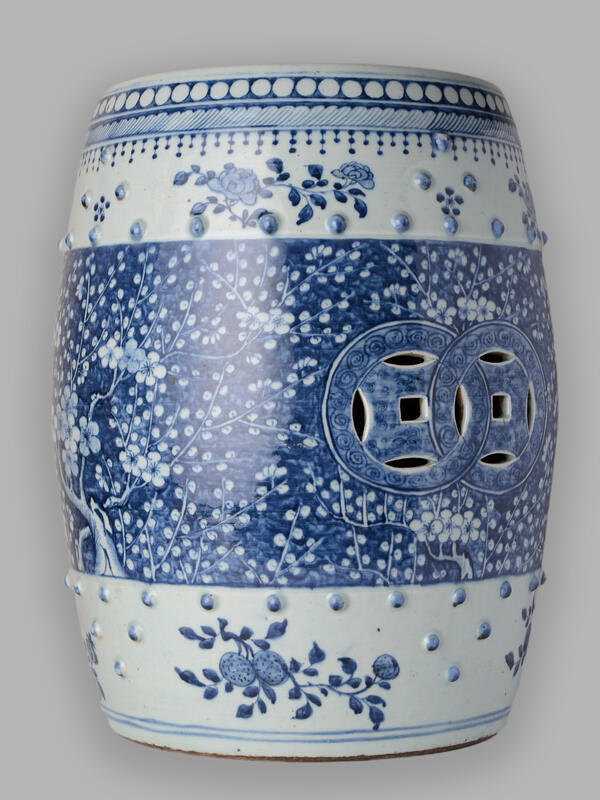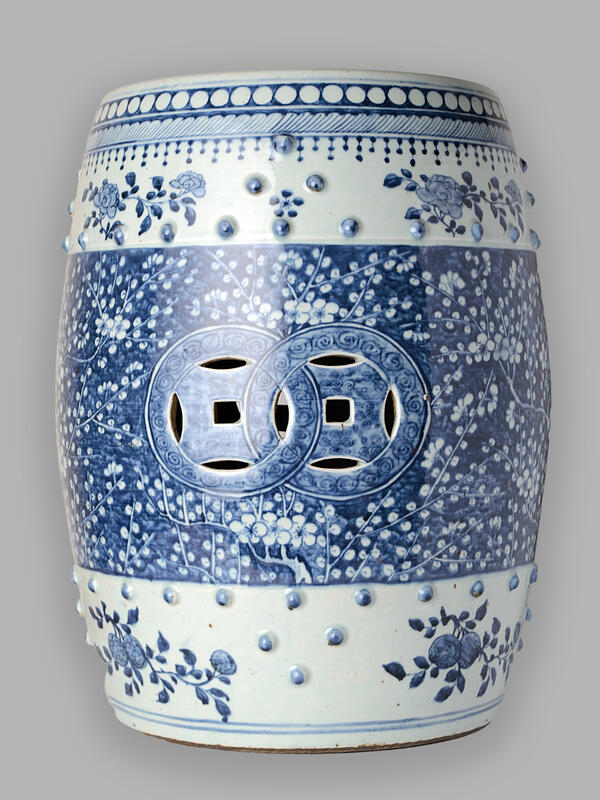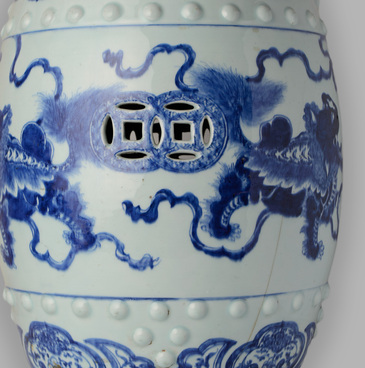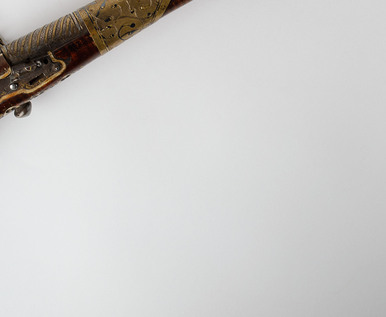Although their design has changed over time, garden stools have retained two of their defining characteristics. Firstly, they have shaped holes which are the legacy of the time when such stools were woven. Secondly, they have a groove below the edge of the seat, which usually stretches along the entire perimeter.
Because of that groove, the seat looked like a button with leather stretched on top of it as if on a drum and fixed with nails. These details were characteristic of most stools made during the Ming dynasty. The displayed stool was produced later, during the reign of the Tongzhi Emperor.
The museum’s porcelain collection includes products that represent different schools of pottery. This garden stool was made of porcelain with cobalt underglaze painting in the 19th century.
As the shape of these stools resembles a drum, they are also called “Gu Dun”, which literally means “a drum-shaped stool”. This garden stool depicts branches of the plum blossom known as the meihua. Chinese artists often painted this tree and sought to capture its beauty.
Among the Chinese, the plum blossom has been associated with purity of thought, serenity, calmness, harmony, and perseverance in the face of adversity. One of the reasons may be that the plum tree lives for a long time, sometimes up to 100 years.
Like all deciduous trees in Chinese painting, a wild plum symbolizes the eternal cycle of nature: young leaves grow, fall off, and then grow once again. There was an entire movement in painting dedicated to the plum.
The Japanese plum begins to bloom in cold weather. It is quite possible to see a blooming wild plum in the snow. It is no wonder then that the meihua symbolizes winter and resilience. For the Chinese, a plum branch was associated with a dragon, and its young shoots were compared to the iron bars of a cage. These two images combined into a tamed dragon.
For several centuries,
porcelain defined how other peoples imagined China, its population, way of life,
and manners. The paintings on porcelain items contributed to a fantastic,
grandiose, and idealized image of China.




